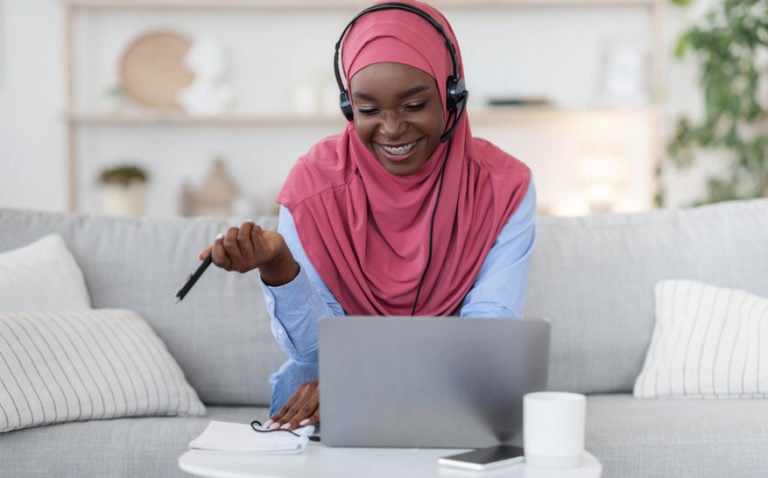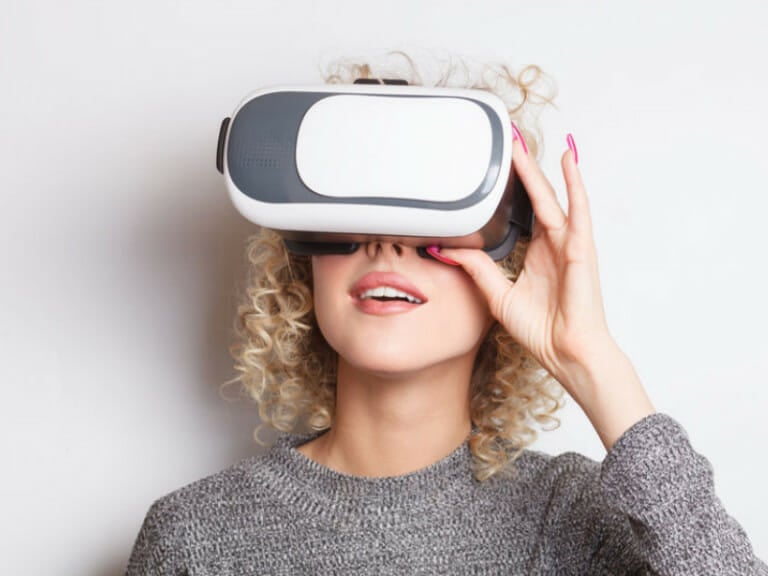Online learning during the pandemic – a practical solution to GMP training requirements.
The education industry was particularly impacted by Covid-19; and by the 2nd quarter of 2020, most face-to-face training sessions were put temporarily on hold.
Temporarily on hold turned to indefinitely on hold; as the pandemic continued to wreak havoc around the globe.
No one knew, at that time, just how long this ‘classroom training pause’ would last. As the year progressed, industry training providers and RTOs began offering online education courses — primarily via ZOOM and other online platforms used by the education sector (such as Blackboard) – and ‘temporary online course delivery measures’ became the ‘go to’ delivery method.
Internet-based training courses also became the preferred delivery method for a number of students and instructors, many of whom were in isolation or ‘stay-in-place’ orders due to skyrocketing infection rates in their communities.
Face-to-face classrooms vs live-streamed training sessions
- While not everyone prefers the convenience of live-streamed and online training courses compared to face-to-face courses in a classroom, these digitally-delivered training methods are safer in the current climate.
- Online training is also proving to be more practical than asking learners and their instructors to travel to a classroom training session.
- Additionally, in terms of cost savings and the impact of training on environmental resources – eLearning wins, hands down.
Read the Business Case Study for GMP eLearning article (GMP training dilemmas). That article highlights key reasons GMP eLearning and virtual GMP training courses are the preferred training methods, not only during a pandemic — but at any point in time.
Additionally, travel reductions are always better for the environment.
Drawbacks to digitally delivered courses
While the benefits of digital learning clearly outweigh the drawbacks, there is a downside.
- Many of us miss the camaraderie and ‘change of environment’ that attending a classroom session provides.
- Some of us may also feel more comfortable asking a question in person, rather than online.
- Disruptions — including multitasking during a Zoom course — are well-recognised deterrents to digital learning experiences.

In comparison to classroom delivery settings, however, live-streamed courses/online training sessions offer more benefits than drawbacks.
That stated:
- Some students and instructors will adapt to digital training delivery methods more readily than others.
- Keeping distractions to a minimum during training sessions is a crucial component for an effective learning experience.
GMP training programs during the Covid-19 Pandemic
GMP industry conversions to live-streamed training sessions in relation to the pandemic.
In the GMP industry, leading GMP training experts (such as Maria Mylonas) quickly adapted their face-to-face GMP courses to online delivery options. This was in addition to the online GMP training options already relied on by the industry to help meet their regulatory requirements for continuing GMP training (such as GMP Refresher training).
The most popular training delivery options to meet GMP requirements were:
- online sessions (self-paced courses, available 24/7 from any location), and
- 1-day intensive instructor-led GMP web-delivered courses (live-streamed via Zoom).
Nearly every workplace became disrupted due to Covid-19 risks in 2020 and 2021.
Anyone NOT using ZOOM quickly learned to adapt.

Change Management in the Education Sector
The pandemic added a sense of urgency to emerging changes in the education sector.
The majority of education institutes, prior to the latest pandemic, were notoriously ‘old school’ (hence the term).
- While the term had several connotations, it meant that education providers tended to be slow to evolve, compared to other sectors.
- Many still relied on classroom attendance despite its limitations (including the lack of education access for people with scheduling conflicts and/or who were raising children).
Universities and RTOs tended to be slower [compared to industry training providers] when it came to adapting to change — especially if the change involved new technologies and other advances.
But the pandemic left the education sector with little choice but to adapt.
Adaptation time frames were crucial factors in education program sustainability, as the once-lucrative education sector was plunged into financial distress when students could no longer attend classroom-delivered training sessions.
Interestingly, until the pandemic resulted in forced changes to education delivery methods, most Institutes insisted on ‘face-to-face’ attendance for learning experiences, despite its many limitations including higher operational costs and learner inconvenience.
Face-to-face education settings also involved higher environmental costs than digital learning sessions. The environment suffered from commuting pollution, paper-based textbooks that would be obsolete within a year or two, and the use of outdated HVAC systems and other energy-inefficient technologies.
In a sense, it’s interesting that Institutes teaching the science of climate change and carbon emissions still insisted on face-to-face learning for their undergraduates.

How the pandemic changed the training & education sector
Education is now being delivered via digital means — and this is likely going to remain the key delivery method.
Institutes must now offer a variety of education solutions to remain competitive in the ever-changing post-pandemic world.
Plato said it best
As the ancient Greek philosopher, Plato, wrote in the Republic, “our need will be the real creator” – which has been paraphrased to the frequently used proverb: “Necessity is the mother of all invention“!
And certainly, when the pandemic threw training programs into chaos, organisations and learners had to adapt.
Invention — in training programs — meant moving from instructor-dependent, classroom-based training resources — to online education resources and delivery formats, such as ZOOM-based training options.
The GMP training & development industry adaptation to the pandemic

GMP training must continue despite the pandemic
The pharmaceutical sector experienced increased pressures in relation to the pandemic. More illness meant more medical supplies were needed, from PPE to ventilators to medicines for respiratory distress and other ailments. Stock shortages were common, and every pharmaceutical manufacturer scrambled to identify and qualify new suppliers for necessary materials.
Production line expansions became a priority.
R&D and production
Vaccine research and development, along with mass-production efforts, left pharmaceutical companies scrambling to fill new roles, recruit and train new employees, and qualify suppliers.
Regulatory authorities and audits
At the same time, Regulatory Authorities such as the TGA and FDA were busy identifying falsely advertised products and substandard medications that infiltrated healthcare systems during periods of unprecedented demand (an example being poorly constructed PPE).
How GMP training changed during the pandemic
Training in GMP environments was incredibly important during the pandemic when demand for existing products and new vaccinations led to massive scale-up projects across the globe, and newly hired researchers and employees.
The GMP training & development industry adaptation to the pandemic meant a greater variety of training options – with one less frequently available option (that being facilitator-led, in-person training sessions).
At the manufacturing/production level, some GMP training programs were briefly put on hold in early 2020.
- But this occurred just as companies needed to scale production to meet increased demand.
- Additionally, some personnel were working remotely or in quarantine (or lockdown, such as in Australia).
This often meant:
- Occasional shortages of personnel and/or longer downtimes between production runs.
- Disrupted production schedules for a variety of reasons, including scheduling disruptions.
At the same time, supply chains were growing more complex as demand for APIs, syringes, PPE, and other supplies escalated across the globe.
This led to an increased demand for digital delivery methods of GMP training – live-streamed as well as eLearning versions of popular GMP compliance topics.
Pharmaceutical companies scrambled to produce certain medical products (from new medicines – such as mRNA vaccines to millions of extra medical devices – such as testing kits, oxygen metres, and healthcare worker PPE). While doing so, the GMP training programs they relied on to meet GMP requirements for adequate, ongoing training (and Professional Development) were falling behind.
GMP audits quickly moved from onsite inspections to a combination of remote auditing and hybrid auditing techniques.
Auditors recognised the need to continue (or even ramp up) GMP compliance inspections during the pandemic, as increased demand meant increased risk to the public were something to go wrong with a batch of medicine, or medical device, which somehow went unnoticed.
So GMP Audits by regulators such as the TGA, FDA, etc. were still occurring (with slight delays/rescheduling, at times). Yet organisations weren’t keeping up with their GMP training programs, especially during lockdowns.

New training & development approach for pharmaceutical manufacturers
When the shock of the pandemic abated (somewhat), QC Departments and their organisations realised that online training, along with virtual interactive GMP learning sessions, held via ZOOM), offered the best GMP training option for personnel.
In particular, with new employees, contractors, and suppliers all coming on board at once — and the need to ramp up production due to increased demand — the need for additional, flexible, employee-focused GMP training grew.
The solution was to customise training programs (including live-streamed vs onsite training sessions) based on:
- what the employee/contractor/supplier already knew, and
- what they lacked (e.g. gaps in their GMP learning experiences and training records), and
- whether onsite visits were too risky in view of pandemic risks/exposure risks
What was the outcome of Plato’s “necessity is the mother of invention” (paraphrase) for education and training delivery – in relation to the pandemic?

The outcome in the education section — and in GMP settings — was a far more flexible, convenient, and cost-effective way to train individuals, including personnel and/or suppliers located in remote locations.
- Online training became a ‘go to’ for induction training and ongoing GMP training in regulatory compliance, along with onsite training for product-specific knowledge (and adequate Supervision).
- GMP topics once provided via face-to-face learning sessions — e.g. onsite training sessions or small group public GMP compliance training courses – are now being offered via live-streaming technologies.
- Companies are making good use of the additional scheduling flexibility (and cost-savings) of digital delivery options vs onsite/classroom training parameters.
Order a training bundle or a live-streamed training session for one person – or train your entire team!
For inexpensive, online 24/7 GMP courses, visit: GMP certificate course – online GMP training options
For group-specific training (10 or more employees) and/or public courses (suitable for 1 or more employees, learning in a group with others in the pharmaceutical sector and/or medical device and/or veterinarian medicines manufacturing industry), visit: GMP certificate courses/live-streamed training sessions
We look forward to seeing you there!
Resources and further reading:
Harvard Business Review: The Pandemic Pushed Universities Online. The Change Was Long Overdue.
Securing your virtual classroom (Zoom classroom training sessions/webinars)
Who is the world’s best GMP training session facilitator (learning & development)?
Terms/definitions
PPE = Personal Protective Equipment (e.g. surgical masks, gloves, gowning, etc)
RTO= Registered Training Organisations (ASQA-listed)
Last updated on October 7th, 2021 at 06:08 am






